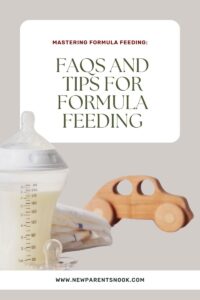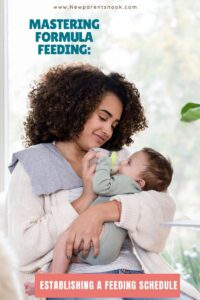Some links on our blog are affiliate links, meaning at no extra cost to you, we may earn a commission if you purchase through them. We participate in the Amazon Affiliate Program, and we recommend products we believe in. Your support helps us keep providing valuable content. Thank you!
Embarking on the potty training journey with your little one can feel like navigating through uncharted territory.
This blog post aims to demystify the process by offering a detailed comparison of various potty training methods.
From the child-oriented approach that waits for signs of readiness to the more structured three-day method, each strategy has its unique philosophy and set of techniques designed to make the transition from diapers to the potty as smooth as possible.
Whether you lean towards a gentle, child-led approach or are considering a quick, parent-led technique, understanding the nuances of each method can help you make an informed decision that best suits your child’s needs and your family’s lifestyle.
Join us as we explore the strengths and challenges of the most popular potty training methods, providing you with the insights you need to embark on this important developmental milestone with confidence and clarity.
There are several different methods and approaches to potty training that cater to varying parenting styles and children’s needs.
Here’s an overview of some popular methods:
Child-Oriented Potty Training: Developed by pediatrician T. Berry Brazelton, this method emphasizes waiting until the child shows signs of readiness.
It’s a no-pressure, child-led approach, where the parent introduces the potty and then lets the child decide when they’re ready to use it.
This method can take longer but often results in fewer power struggles.
Parent-Led Potty Training: This is a more traditional approach, where parents introduce the potty at a time they choose, often around the age of 2.
It involves a routine and frequent reminders to use the potty. Parents may use rewards and praise to encourage the child.
Three-Day Potty Training: This intensive method involves setting aside three days to focus exclusively on potty training.
The child is encouraged to go without diapers and use the potty instead.
This method requires constant supervision and encouragement from the parent and works best when the child is showing signs of readiness.
Toilet Training in Less Than a Day: Developed by psychologists Nathan Azrin and Richard Foxx, this method is a form of rapid toilet training.
It involves a structured and intensive day of learning, using a doll to demonstrate proper potty behavior and using frequent practice sessions.
This method often uses rewards and positive reinforcement.
The Montessori Method: This method aligns with Montessori principles of independence and self-directed learning.
Children are encouraged to use the potty on their own and are provided with clothes that are easy to remove.
The focus is on teaching self-care skills as part of the process.
The Oh Crap! Potty Training Method: Popularized by Jamie Glowacki, this method is designed for children aged 20 to 30 months and involves a block system.
Block One starts with the child being naked and having the potty close by, gradually moving through the stages as the child becomes more comfortable and skilled.
Signs and Signals Method: In this method, parents look for signs that their child needs to use the potty and then prompt or take them to the potty.
This requires close observation and can help in understanding the child’s natural bathroom timing.
Elimination Communication: This method starts in infancy and involves the parent learning to interpret the baby’s cues and timing for needing to use the bathroom.
The parent then holds the baby over a potty or toilet at these times. It’s more about communication and less about actual “training.”
In Summary
Each method has its pros and cons, and the best approach depends on the child’s age, maturity, and readiness, as well as the parent’s schedule and parenting style.
It’s also common for parents to blend elements from different methods to best suit their needs and those of their child.







